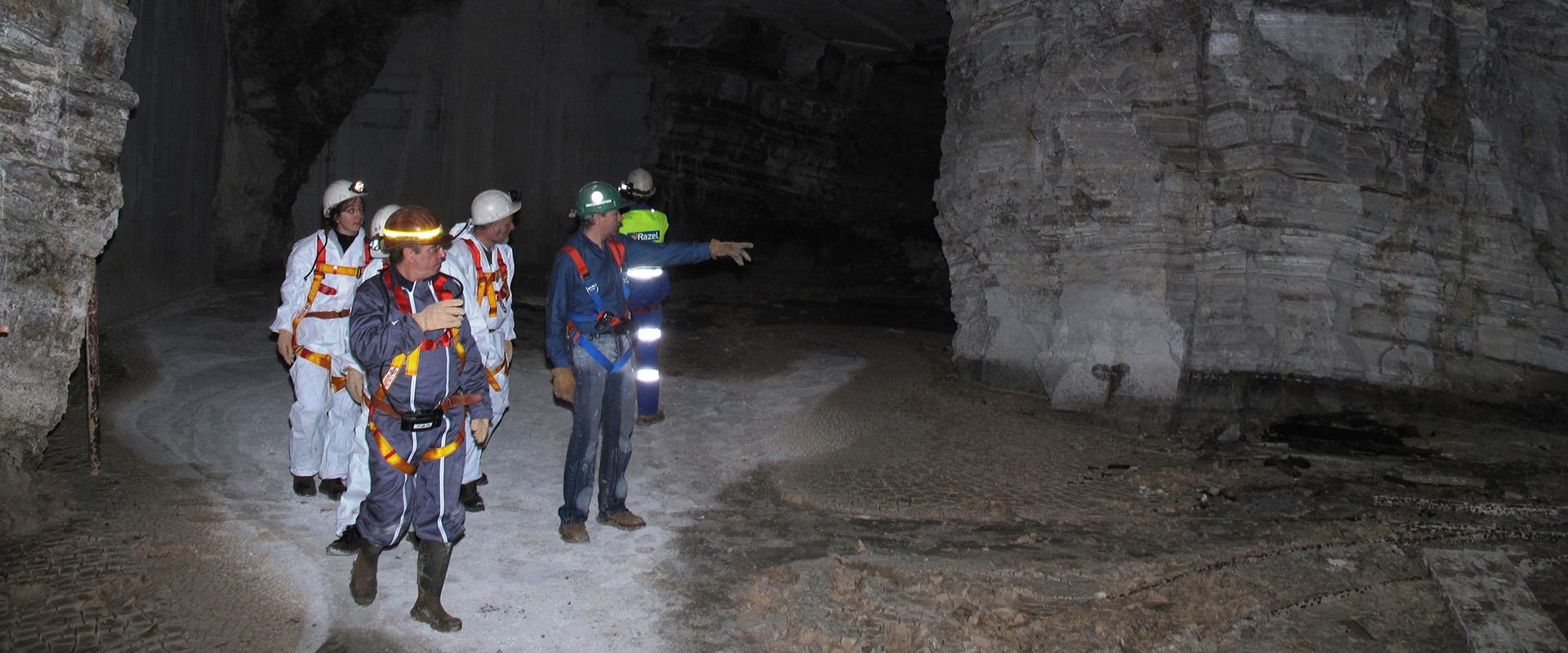
Key figures
-
74.00boreholes to fill in the risk area
-
5800.00m2 concerned
-
12000.00m3 of slurry
-
1.50M€Total cost of the operation
This was a major operation, in terms of the surface area (5 800 m²), the volumes handled (12 000 m³ of slurry), the sloping terrain and the surface infilling method that required no human intervention from below ground. The safety engineering work in the R158J1 “Franchepré” risk zone, in the municipality of Moyeuvre-Grande some 30 km to the northwest of Metz (Moselle), was an exemplary project. The total cost of the operation is €1.5M.
The risk: sinkholes forming craters several meters across
The area was dangerous: the iron mine directly below the Rue des Gobelles, which operated from the late 19th-century to 1930, had in recent years become a direct threat to six houses. The iron ore was extracted by tracing and widening the strata; large sections were removed, creating large cavities for which stripping ratios, i.e., the ratio of extracted volumes to the initial volume of rock, were sometimes as high as 70%. The mine roof was supported by pit props built up with mine spoil.
The zone was characterised by very large roof spans, sometimes 10 m or more, so that the remaining pit props were close to breaking point. The collapse of one pit prop would have created a domino effect bringing down the props on either side, with the potentially devastating effect of creating sinkholes several meters across…
This high-risk zone in terms of localised cavity collapse had been monitored annually from below ground. In 2012, given the deterioration of the mine workings and the high risk to personnel, the BRGM decided to halt surveillance from below ground and proposed an infilling operation to make the area safe. The DREAL for the Lorraine Region then commissioned the BRGM’s Mine Safety and Risk Prevention Department to undertake the necessary work. The task was directly in line with the Decree of 4 April 2006 delegating project management responsibilities to the BRGM for all mine safety engineering work decided on by the State.
Infilling from above
First of all, to avoid any risks to residents, the occupants of the six houses under threat were rehoused for the duration of the operation. Work then began, with the specific characteristic that none of the operations involved work below ground.
The infill zone was confined by creating 12 dams, which was done from above by injecting reinforced slurry. Infilling then proceeded through 74 boreholes. Reconnaissance drilling showed hitherto unknown cavities that were specified and quantified by video inspections.
The next phase involved a series of highly technical infilling operations. Drilling was exclusively rotary – no depth hammer could be used given the fragile surroundings - leaving a maximum of 9 m between two boreholes to ensure that all cavities to be made safe were filled in completely. “Given the deterioration of the mine workings below the houses, infilling started a short distance away before moving closer to ensure that the buildings remained safe”, explains Clément Lebleu. A bond cleavage agent was injected under pressure into each borehole to fill any residual cavities. The final step was to drill six monitoring boreholes under the houses.
The infilling operations were remotely controlled, by means of a video camera permanently installed on the site and 3-D mapping with a laser probe to detect any unknown cavities. Slurry production was controlled on a daily basis (density, viscosity and decantation), with compressive strength tests performed by an external laboratory.
The work was completed on time to a very tight schedule: infilling began on 19 July and was completed on 15 November with the drilling of six monitoring boreholes - and all the residents were able to get back home for Christmas…








